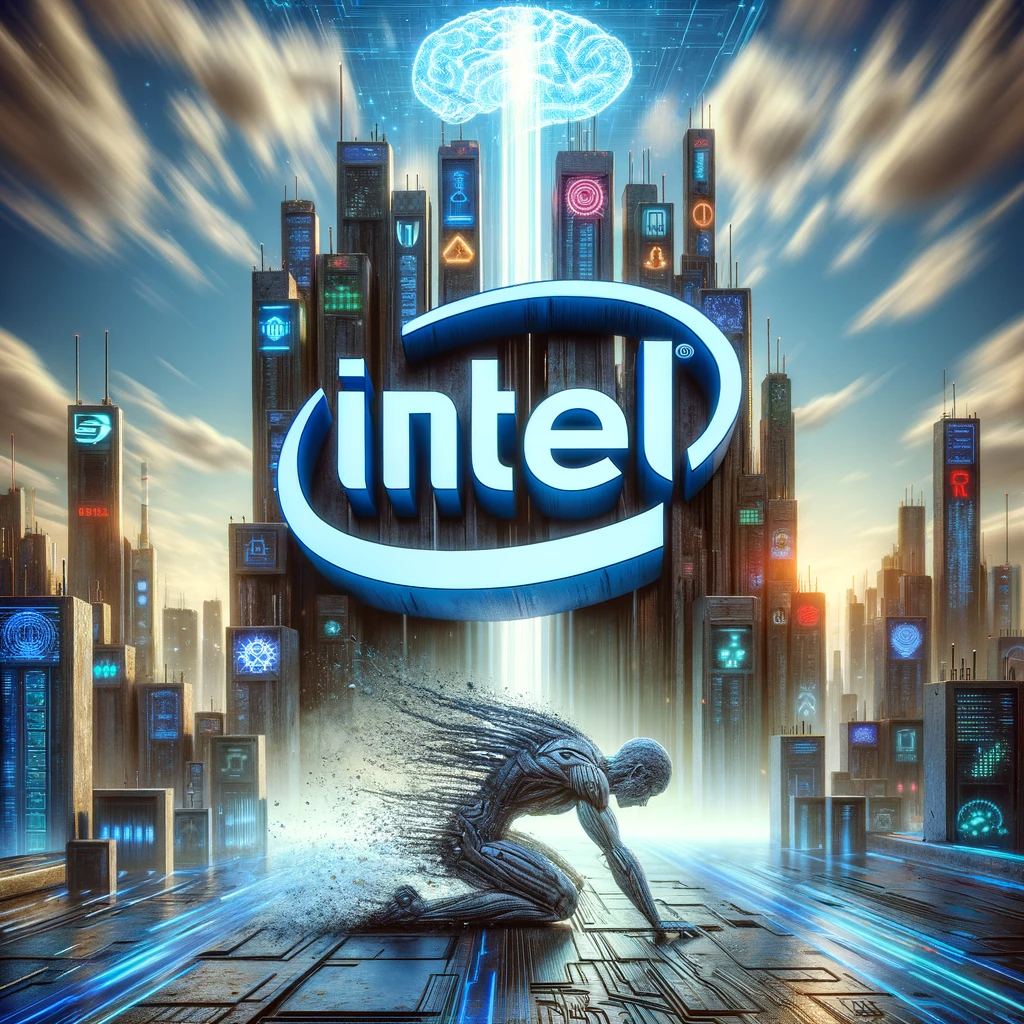Intel Corporation, one of the world’s leading chipmakers, has witnessed a sharp decline in its stock price, plummeting more than 12 percent in response to a discouraging first-quarter revenue outlook. This downturn has raised concerns about Intel’s ability to keep pace in the rapidly evolving artificial intelligence (AI) sector, even as it grapples with a sluggish personal computer (PC) market. The chip industry has experienced substantial growth driven by AI-related demands, but Intel appears to be an exception to this trend, analysts have noted. This article delves into the challenges facing Intel in the AI race and its potential impact on the broader semiconductor market.
AI’s dominance and Intel’s struggle
In the ever-expanding landscape of AI technology, Intel is finding itself trailing behind its competitors. While AI is driving a significant boom in the chip sector, with semiconductor companies catering to the robust data needs of generative AI experiencing remarkable stock market gains in 2023, Intel seems to be faltering. According to Hans Mosesmann, an analyst at Rosenblatt Securities, “AI seems like it is everywhere except at Intel.” This observation is supported by the lack of any noticeable AI growth vector within Intel’s portfolio, which Mosesmann believes could lead to “another transitional year” for the company.
Intel’s uninspiring forecast has had a ripple effect on the broader semiconductor industry. The Philadelphia SE Semiconductor Index recorded a 2.7 percent drop, marking its worst day in over three weeks. This decline has not spared other major chipmakers, including Nvidia, Advanced Micro Devices (AMD), Qualcomm, and Micron Technology, which saw their shares decrease between 1.3 percent and 2.8 percent.
Intel’s market value erosion
The repercussions of Intel’s disappointing outlook have been substantial. The company shed approximately $24.9 billion in market value, with its stock closing at $43.65 on Friday. It is worth noting that Intel had enjoyed a stellar year in 2023, with its shares surging by an impressive 90 percent. However, this recent setback raises concerns about the sustainability of that growth trajectory. Intel’s projection for the current quarter’s revenue suggests that it may fall short of market estimates by over $2 billion, further fueling apprehensions about its competitive position in the AI market.
Intel’s current AI landscape
Although Intel has yet to establish a significant presence in the AI-specific chip market, it is not absent from the AI ecosystem. Intel’s central processing units (CPUs) are frequently used in conjunction with Nvidia’s AI chips. A third of Intel’s server CPUs are currently sold as part of AI systems. While this partnership demonstrates Intel’s willingness to participate in the AI revolution, it still lags behind competitors like Nvidia and AMD, which have made substantial strides in developing AI-focused chips.
Analysts hold mixed opinions on Intel’s prospects. Despite the recent stock tumble, at least 15 brokerages have raised their price targets for Intel. The median price among these brokerages stands at $44, according to LSEG data. Some analysts believe that Intel can still benefit from its long-term investments in AI, highlighting the company’s solid margins. Thomas Monteiro, a senior analyst at Investing.com, stated, “The company still stands to win from its AI bet in the long run. Margins appear solid, meaning that CEO Pat Gelsinger’s plan will still be put in motion, albeit at a slower pace.”
Comparison with competitors
In terms of valuation, Intel’s stock currently trades at about 28 times its 12-month forward earnings estimates, whereas AMD trades at 45.08 times and Nvidia at nearly 30 times, according to LSEG data. This valuation gap underscores the perception that Intel is facing a competitive disadvantage in the AI market compared to its rivals.
Intel’s recent stock decline and bleak revenue outlook have cast a shadow over its competitiveness in the AI sector. While the chip industry, driven by AI-related demands, has witnessed remarkable growth, Intel seems to be struggling to keep pace with its peers. The company’s reliance on partnerships with AI-focused chipmakers like Nvidia highlights its need to catch up in the AI race. However, some analysts remain optimistic about Intel’s long-term prospects, citing its solid margins and potential for growth in the AI market. As Intel navigates these challenges, the semiconductor industry as a whole will continue to monitor its progress and the evolving dynamics of the AI landscape.





